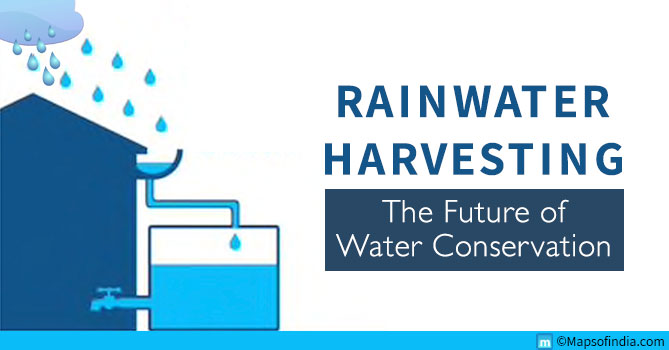Water is the reason why life exists on planet Earth, without it life is unimaginable. However, freshwater sources are becoming scarce with the passage of time. Reports of several global agencies, including United Nations, indicate that if the current situtation of water does not change and preventive measures are not taken, then world will start to run out of fresh water by 2050. Rainwater harvesting is a sustainable process that helps in preserving rain water for different purposes and for the future needs as well. Rainwater Harvesting is a method of collecting and storing rain water to be used for various purposes while it can be used in future as well.
Methods of Rainwater Harvesting
There are primarily two prevalent methods of rainwater harvesting that are used in most of the areas:
- Surface Run-off Rainwater Harvesting: The rainwater that flows off in the urban areas can be collected and stored to recharge the groundwater level or the aquifer bed, instead of letting the water flow into the drains.
- Rooftop Rainwater Harvesting: In rooftop harvesting the rainwater is directly collected from the roof of the buildings and transported either into a tank or an artificial aquifer. Through this method the harvested water can be used for daily use purposes (including drinking and cooking, only after purifying the water at a basic level) and for recharging the aquifers and help restore the groundwater levels.
Components: Catchments, Transportation, First Flush, Filter
Methods:
- Water storage for usage
- Recharging aquifers
- Bore well recharging
- Recharge pits
- Recharge shafts or Soakway
- Dug wells recharge
- Recharging Trenches
Benefits of Rainwater Harvesting
- Storing rainwater helps in recharging the aquifers.
- It helps in preventing urban flooding due to excess rain.
- The stored water can be used for irrigation practices in farming region.
- The water can be used for daily use and help in reducing water bills in the towns and cities.
- Is a helpful way to tackle the scarcity of water in arid and dry regions.
- It helps in restoring the groundwater level.
Relevance today and in future
The global warming is taking its toll on the climate pattern across the world. Rains have become unpredictable in nature with some regions suffering with usual than longer dry spells, while some region are hit by incessant rain. Rain hit regions are unable to utilise or control the excess waters, that leads to flood-like situation. Rainwater harvesting can help overcome the problem of flood, while also helping in storing excess water that can help in providing water to the water scarce region. This renewable source of water management can help in overcoming major water-related problems, that are not only plaguing the world right now but can have a severe impact on the global population and environment in the future.




